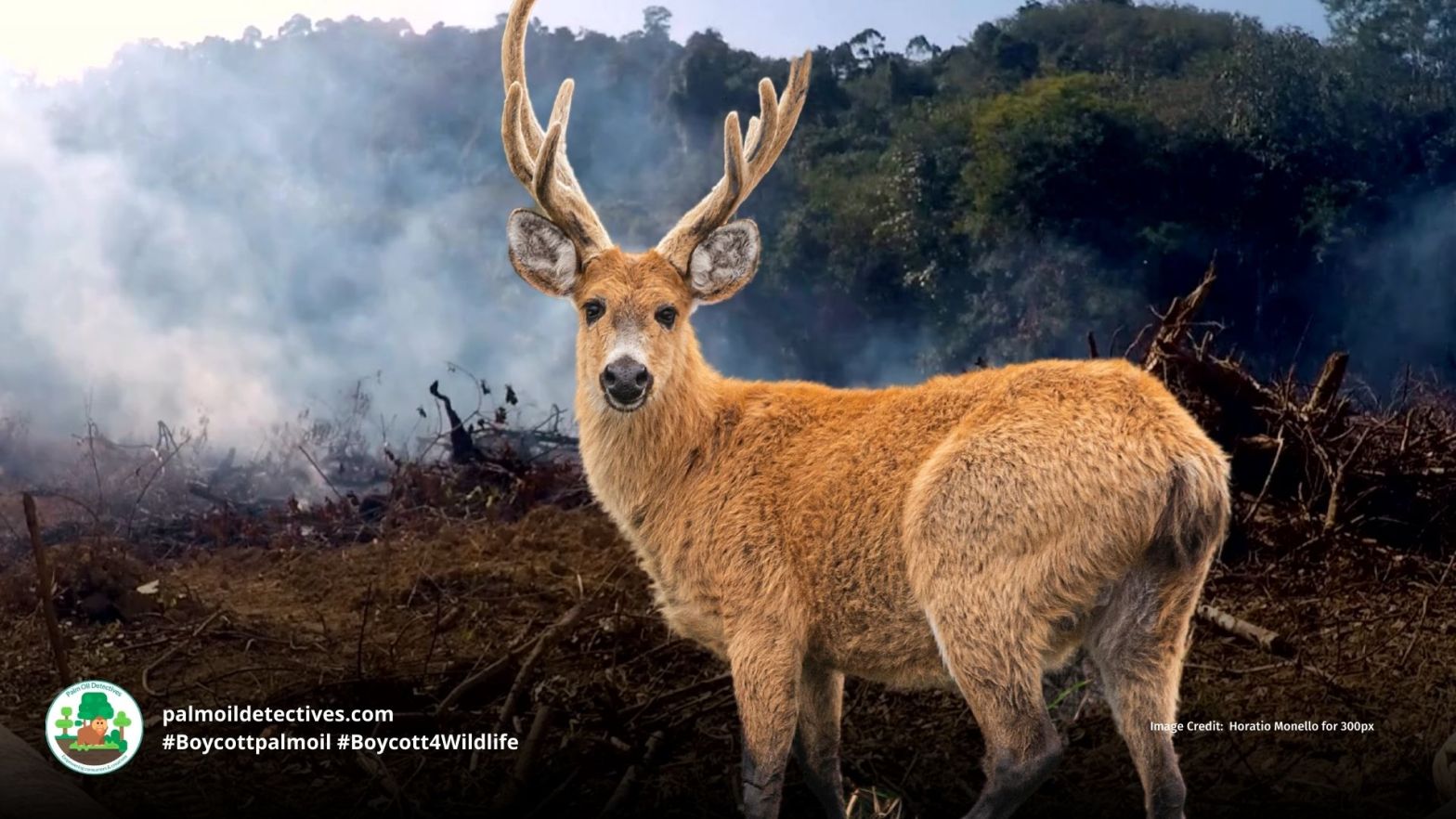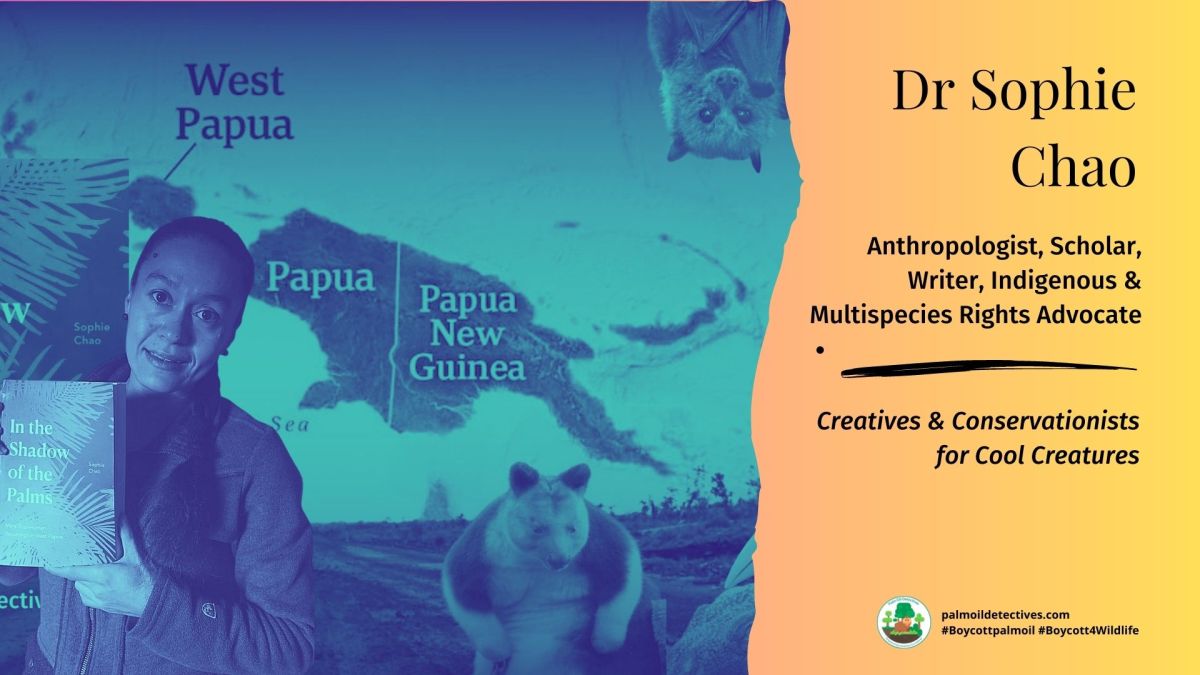Marsh Deer Blastocerus dichotomus
IUCN Status: Vulnerable
Locations: Argentina; Bolivia, Plurinational States of; Brazil; Paraguay; Peru
Extinct: Uruguay
The Marsh deer are South America’s largest deer species, uniquely adapted to wetland life with their web-like hooves and preference for aquatic plants. They are prey animals for jaguars and pumas.
Already extinct in Uruguay, these majestic creatures, once widespread, are now confined to isolated pockets of Argentina, Bolivia, Brazil, Paraguay and Peru. Their main threat is habitat loss and fragmentation due to palm oil, soy and meat deforestation along with hydroelectric dams and gold mining.
Even as researchers strive to understand their complex and obscure social and mating behaviours, time is running out for these unique creatures. Use your wallet as a weapon and protect the Marsh deer, every time you shop #BoycottPalmOil #BoycottGold4Yanomami #Boycott4Wildlife.
Time is running out for the tall and handsome, Marsh #deer 🦌🤎 the biggest deer in #SouthAmerica. They are #vulnerable from #palmoil 🌴🥜🥩🔥 #soy #meat #deforestation and #hunting. Help them and #Boycottpalmoil 🌴🪔🧐⛔️#Boycott4Wildlife @palmoildetect https://palmoildetectives.com/2024/05/19/marsh-deer-blastocerus-dichotomus/
Marsh Deer 🦌😻 live most of their lives in #wetlands of #Argentina 🇦🇷 #Peru 🇵🇪 #Bolivia 🇧🇴 #Brazil 🇧🇷eating plants. They are #vulnerable from #palmoil #agriculture and gold #mining. Fight for them and #Boycottpalmoil 🌴🚫#Boycott4Wildlife @palmoildetect https://palmoildetectives.com/2024/05/19/marsh-deer-blastocerus-dichotomus/
Marsh Deer: Fast Facts
The Blastocerus dichotomus, more commonly known as the Marsh deer, is a fascinating species with several unique characteristics.
- Largest Deer in South America: The Marsh deer is the biggest deer species on the continent, measuring up to 2 meters in length and 1.2 meters at the shoulder height.
- Aquatic Adaptations: Unlike most other deer species, Marsh deer are well adapted to a life in wetlands and are good swimmers. Their hooves are even slightly webbed to help navigate through marshy areas.
- Seasonal Diet: Marsh deer is primarily a herbivore that feeds on aquatic plants. However, their diet can shift between the dry and wet seasons, adapting to the availability of food.
- Antler Shedding: Only male Marsh deer have antlers, and these are shed annually. These antlers can grow up to 60 cm in length and are branched, making them quite distinct.
- Restricted Habitats: While they were once widespread, they are now mostly found in isolated pockets along specific river basins and protected areas, signaling the effects of habitat loss and fragmentation.
- Color Changing Fawns: The young are born with a whitish coat that gradually changes to the adult coloration within their first year.
- Predators: Their natural predators include jaguars and pumas, but arguably, human activities pose a far greater threat to them through habitat destruction and hunting.
- Protected Areas: Some of the last strongholds for these deer are protected zones like Bahuaja-Sonene National Park in Peru and the Ibera Natural Reserve in Argentina.
- Social Structure: The social structure and mating systems of Marsh deer are not well understood, making them an intriguing subject for ongoing research.
- Threats: Apart from natural predators, they face significant threats from human activities such as agriculture, hydroelectric projects, and mining, putting them on the path toward endangerment if not adequately protected.
Appearance & Behaviour
Known scientifically as Blastocerus dichotomus, the Marsh deer holds the title for the largest deer species in South America. Adults can stretch up to 2 meters (around 6.6 feet) in length and stand as tall as 1.2 meters (nearly 4 feet) at the shoulder. Their appearance is striking, with large ears fringed in white, fur that ranges from red-gold to tawny brown, and notably long, dark legs. Males stand out even more with branching antlers that can extend up to 60 cm (or 23 inches).
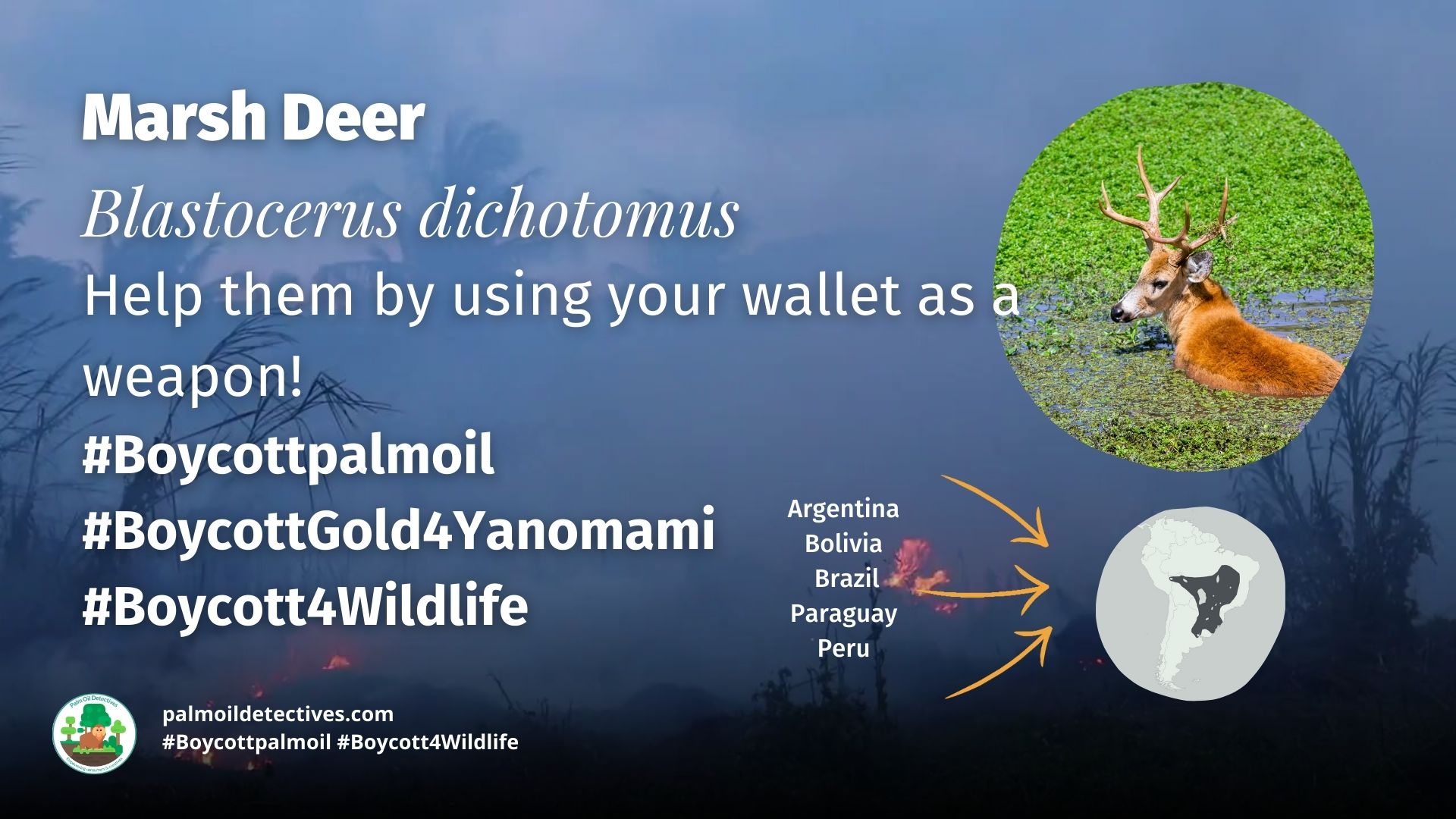
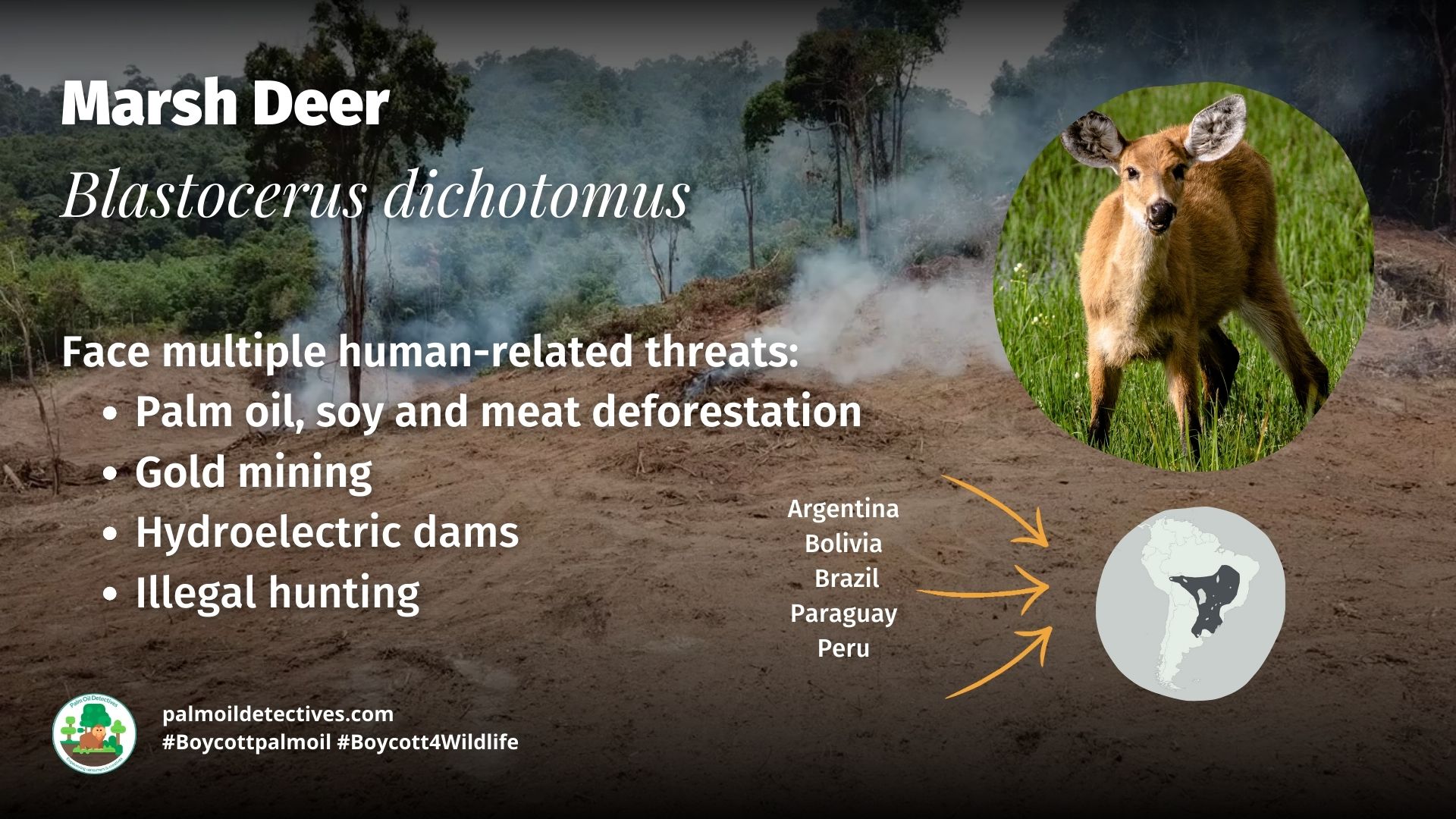
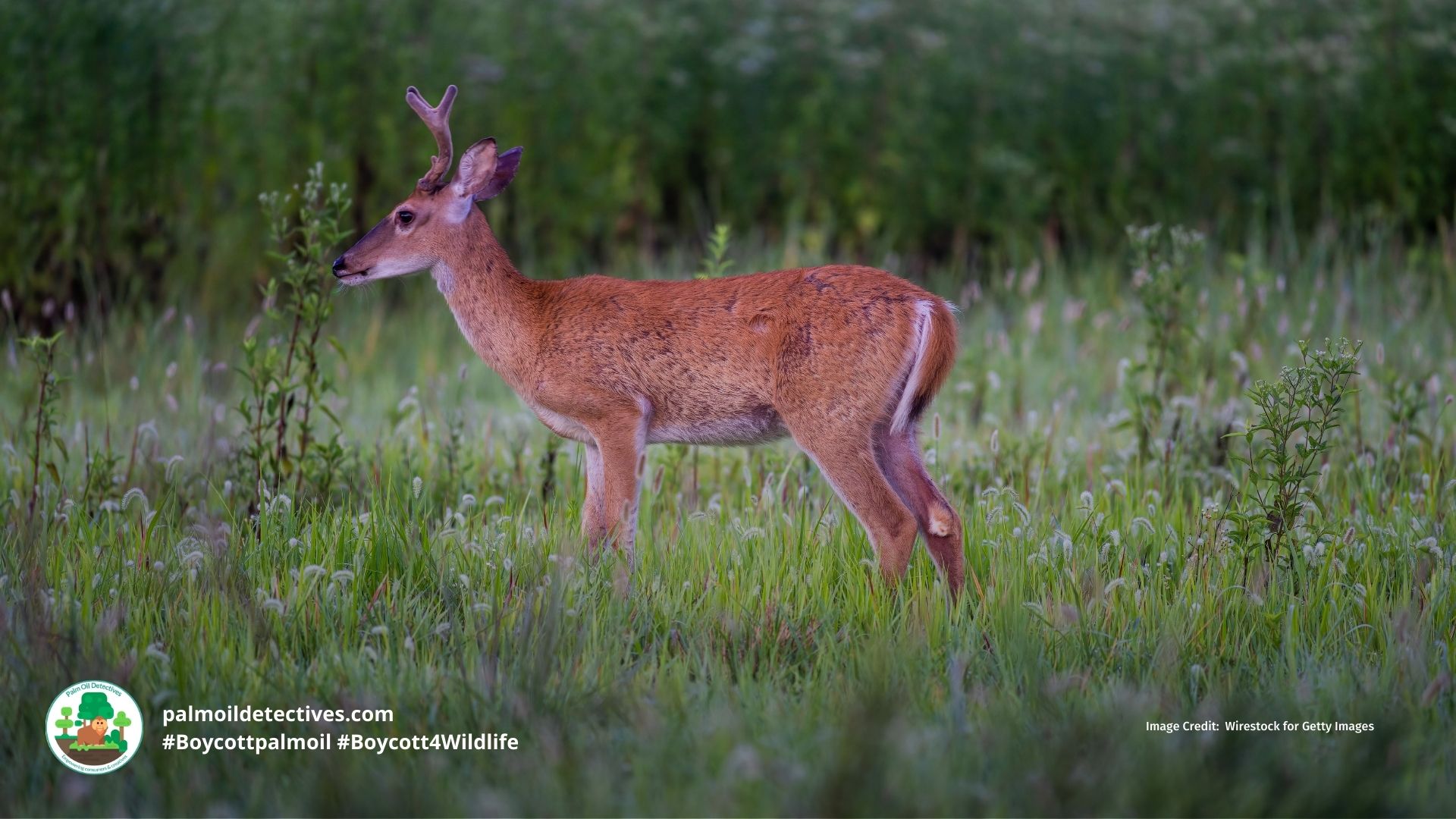
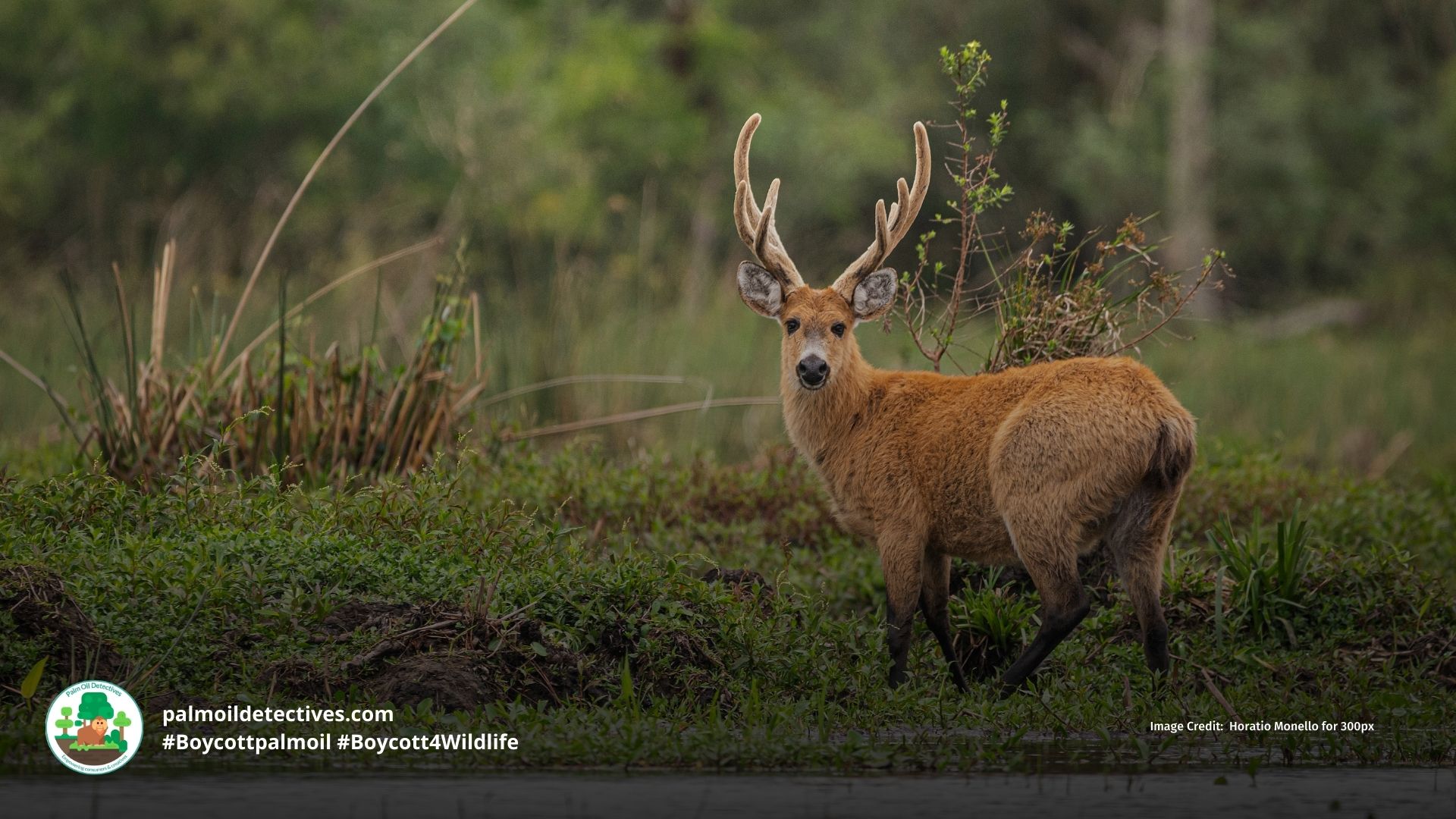
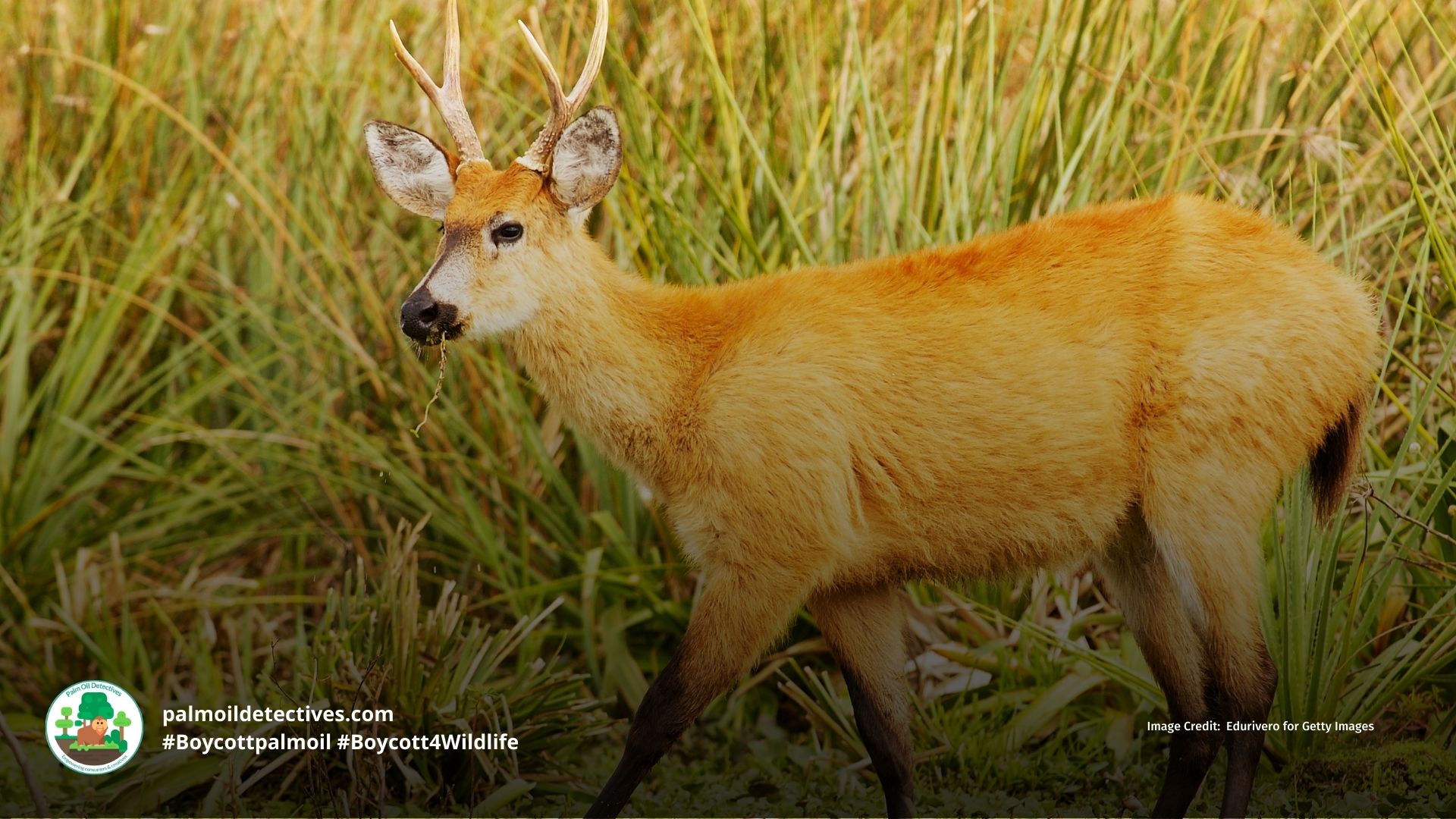


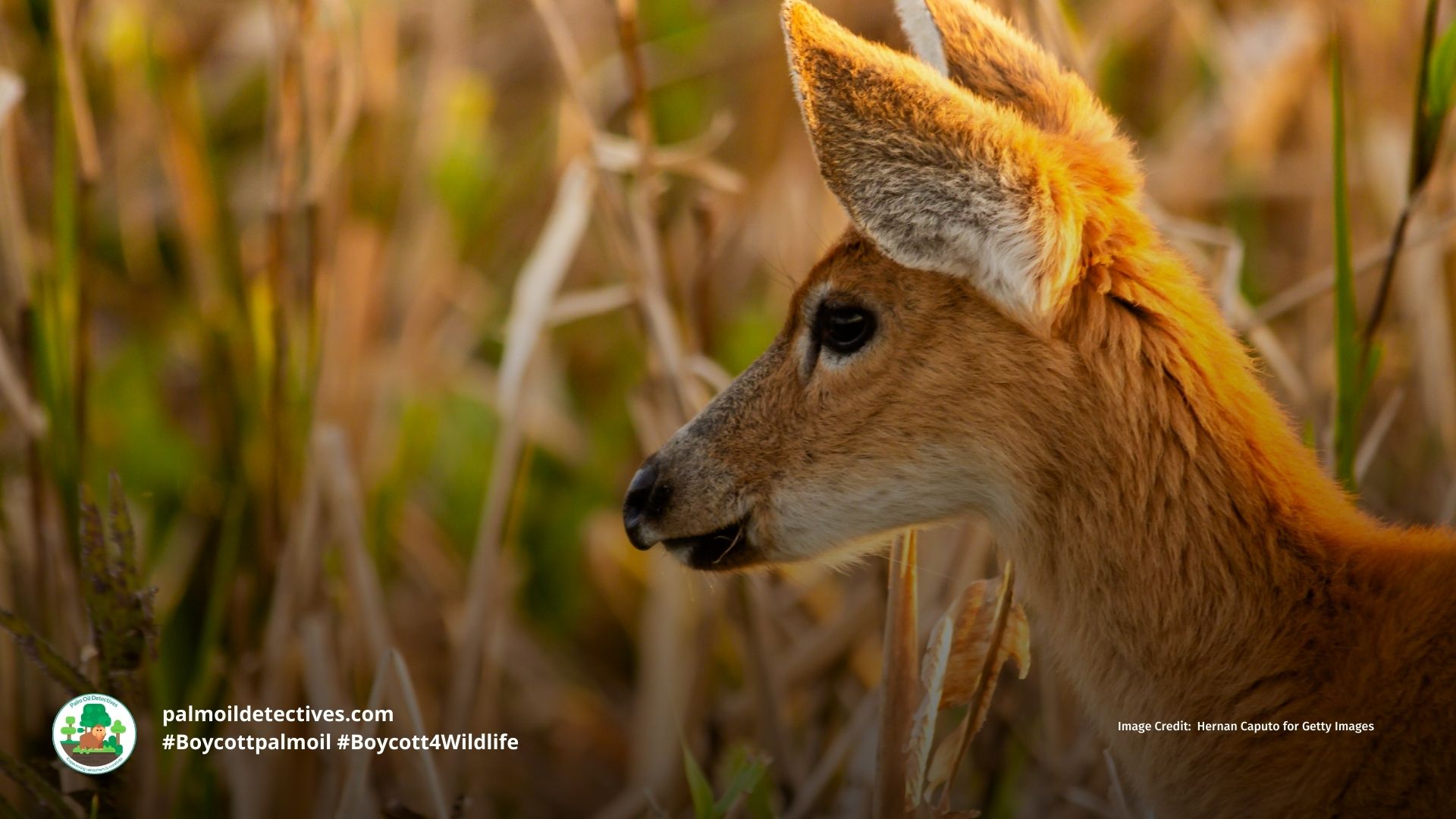
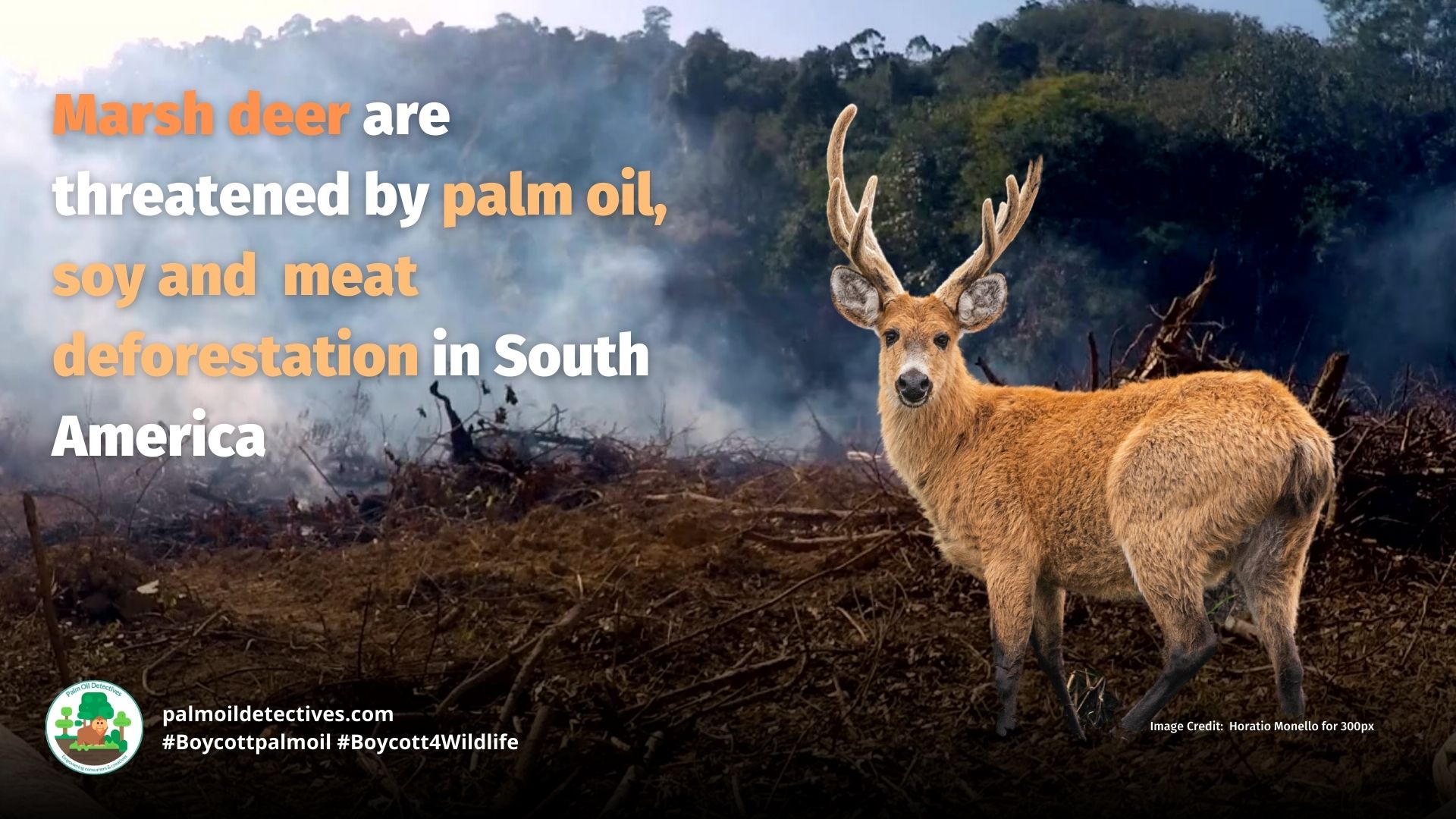




Threats
The Marsh deer faces serious challenges to its survival, primarily from hunting and the destruction of its natural habitat. Here’s what’s contributing to the species’ decline:
- Palm Oil, Soy, and Meat Deforestation: These agricultural activities are prime culprits behind the loss of vital habitat.
- Hydroelectric Projects in Brazil and Argentina: Dams like those on the Tiete, Paraná, and Rio Grande rivers have significantly altered and reduced floodplain areas crucial to Marsh deer.
- Cattle Ranching: This has not only diminished available habitats but has also fragmented them. Plus, the Marsh deer now has to compete with domestic livestock for limited resources.
- Pollution from Gold Mining: In the Pantanal region, water pollution originating from gold mining activities poses a severe risk.
- Bovine Diseases: Past incidents in Bolivia have shown that the inadvertent spread of diseases from cattle can cause reproductive issues and significant population losses among the Marsh deer.
- Hunting and Competition with Livestock: Especially in areas like the Ibera Natural Reserve in Argentina, these factors can serve as additional stressors, potentially limiting the population growth of this already threatened species.
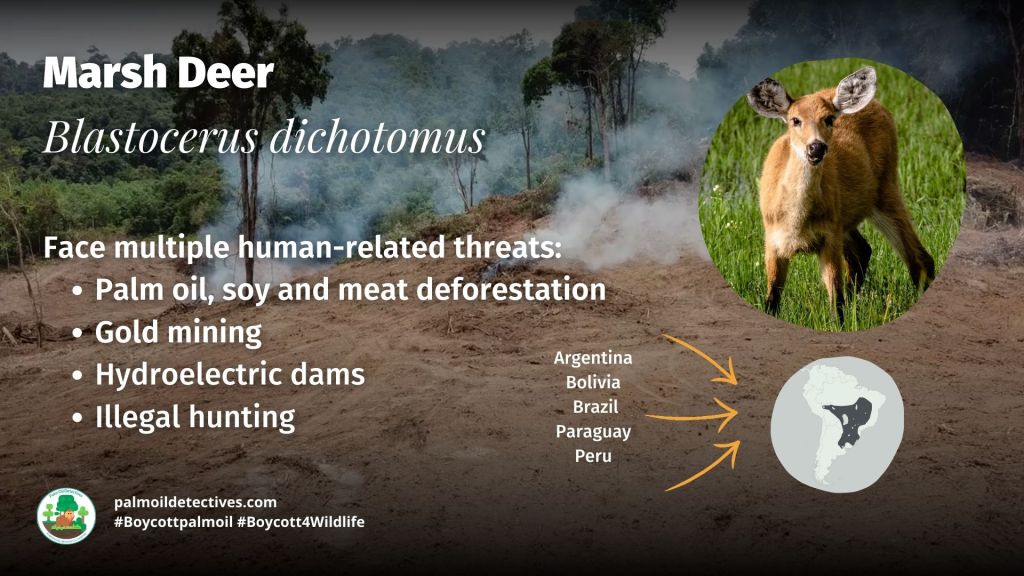
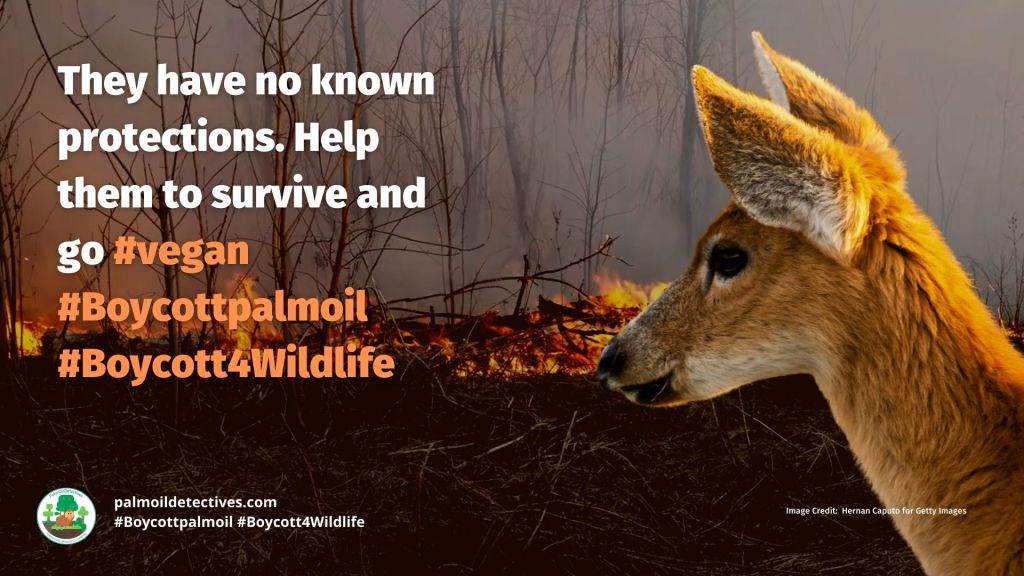

Habitat
Once rulers of wetlands across South America, Marsh deer are now reduced to mere pockets of their former range. Gone are the days when they graced the expansive landscapes of countries like Argentina, Bolivia, Peru, Brazil, Uruguay, and Paraguay. Now, they’re cornered into specific areas near rivers like the Paraná, Paraguay, Araguaia, and Guapore, not to mention a smattering of spots in the southern Amazon. Their last sanctuaries? Protected areas like Bahuaja-Sonene National Park in Peru.
Though they’ve adapted to marshes and lagoons, particularly in unique ecosystems like the Pantanal and Chaco, they’re limited to waters less than 70 cm (28 inches) deep. Even in these last refuges, they face relentless threats: from deforestation for palm oil, soy and meat agriculture, hunting and hydroelectric projects that alter their floodplain habitats.
Diet
Marsh deer are plant-eaters, focusing mainly on water-dwelling plants for nourishment. They also munch on aquatic flowers and shrubs that sprout in swampy terrains and on floating vegetation mats. Depending on whether it’s the dry or flood season, there is some variation in what they choose to eat.
Mating and breeding
The reproductive behavior of Marsh deer isn’t fully understood. Mating generally takes place during the dry season, although this can vary among different deer. After a gestation period of approximately 271 days, a single fawn is usually born between October and November, though twins are not unheard of. These fawns start off with a whitish coat that darkens as they age, typically within the first year. Weaning occurs around the 5-month mark, but young deer often stay with their mothers for more than a year. They reach reproductive age between 1 and 2 years old.
Support Marsh Deer by going vegan and boycotting palm oil in the supermarket and saying no to gold it’s the #Boycott4Wildlife
Support the conservation of this species
This animal has no protections in place. Read about other forgotten species here. Create art to support this forgotten animal or raise awareness about them by sharing this post and using the #Boycottpalmoil #Boycott4Wildlife hashtags on social media. Also you can boycott palm oil in the supermarket.
Further Information
Duarte, J.M.B, Varela, D., Piovezan, U., Beccaceci, M.D. & Garcia, J.E. 2016. Blastocerus dichotomus. The IUCN Red List of Threatened Species 2016: e.T2828A22160916. https://dx.doi.org/10.2305/IUCN.UK.2016-1.RLTS.T2828A22160916.en. Accessed on 03 June 2023.
Marsh Deer on Wikipedia – https://en.wikipedia.org/wiki/Marsh_deer
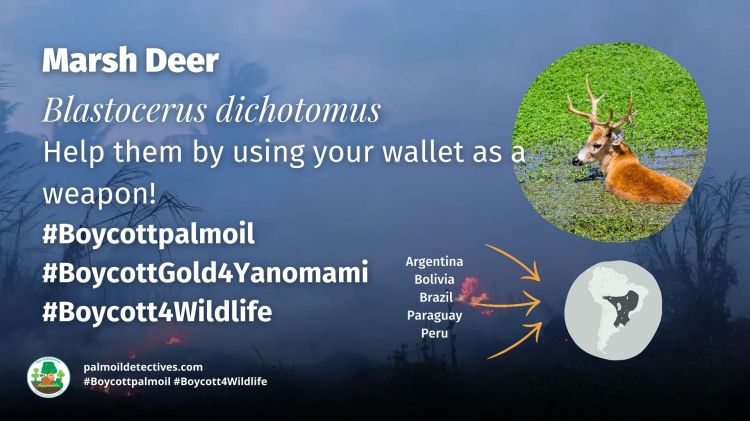

How can I help the #Boycott4Wildlife?
Take Action in Five Ways
1. Join the #Boycott4Wildlife on social media and subscribe to stay in the loop: Share posts from this website to your own network on Twitter, Mastadon, Instagram, Facebook and Youtube using the hashtags #Boycottpalmoil #Boycott4Wildlife.
2. Contribute stories: Academics, conservationists, scientists, indigenous rights advocates and animal rights advocates working to expose the corruption of the palm oil industry or to save animals can contribute stories to the website.
3. Supermarket sleuthing: Next time you’re in the supermarket, take photos of products containing palm oil. Share these to social media along with the hashtags to call out the greenwashing and ecocide of the brands who use palm oil. You can also take photos of palm oil free products and congratulate brands when they go palm oil free.
4. Take to the streets: Get in touch with Palm Oil Detectives to find out more.
5. Donate: Make a one-off or monthly donation to Palm Oil Detectives as a way of saying thank you and to help pay for ongoing running costs of the website and social media campaigns. Donate here
Discover more from Palm Oil Detectives
Subscribe to get the latest posts sent to your email.

